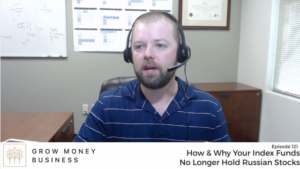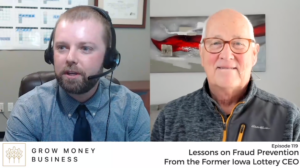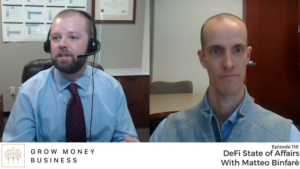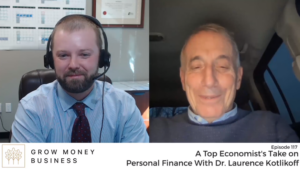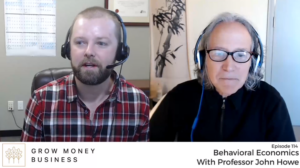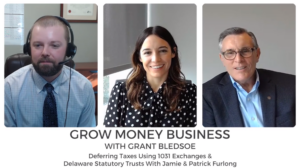Russia’s recent invasion of Ukraine and the economic sanctions that were imposed sent shockwaves through the global financial markets. As a result, the Russian Ruble plummeted to a record low, Russian stock markets were shattered,…
Read More
Retirement is About Income … and Taxes
You’ve figured out your budget, your retirement nest egg is substantial, and you’re ready to make the transition to living on income from savings instead of income from work. But have you thought through the…
Read More
GMB EP #119: Lessons on Fraud Prevention From the Former Iowa Lottery CEO
Ever wonder what it takes to scam the state lottery? Terry Rich joins us on the podcast this week to discuss fraud prevention in small businesses & other organizations. Terry is the former CEO…
Read More
February Market Commentary: Action and Reaction
February Recap and March Outlook February opened with a strong January employment number as the Bureau of Labor Statistics reported an increase of 467,000 jobs. Instead of reassuring markets after a rough ride in January,…
Read More
A Note on the Invasion of Ukraine
The news about the invasion of Ukraine is distressing on a humanitarian level and unsettling when thinking about the impact of increased volatility on investment portfolios. Added to already high inflation and the market’s uncertainty…
Read More
GMB Ep #118: DeFi State of Affairs With Matteo Binfarè
Decentralized finance (DeFi) is an emerging system of financial products and services built on blockchain technology. It utilizes secure distributed ledgers similar to those used by cryptocurrencies. In today’s episode of Grow Money Business,…
Read More
GMB Ep #117: A Top Economist’s Take on Personal Finance With Dr. Laurence Kotlikoff
Economics applies to every industry at the individual, national, and global level. In this week’s episode, we have a distinguished guest who is on a mission to make economics useful at all levels. Dr….
Read More
GMB EP #116: A Top M&A Advisor’s Perspective on Growing & Selling Your Business
An exit strategy is a key aspect in a business owner’s journey. However, the majority of business owners do not consider their exit strategy until it is too late. On today’s episode of Grow Money…
Read More
GMB Ep #114: Behavioral Economics With Professor John Howe
When confronted with significant decisions, our thoughts frequently stand in the way of rational decision-making. Today’s episode of Grow Money Business features John Howe, a finance professor at the University of Missouri. He is an…
Read More
GMB Ep #112: Deferring Taxes Using 1031 Exchanges & Delaware Statutory Trusts with Jamie & Patrick Furlong
1031 Exchanges and Delaware statutory trusts are both nifty instruments for financial planning. In today’s episode, we explore more about the deferring taxes using 1031 Exchanges and Delaware statutory trusts with Jamie & Patrick Furlong….
Read More

